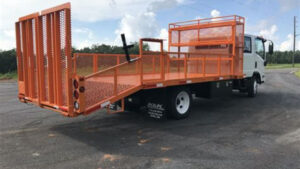When it comes to buying or selling a truck, it’s important to have a good idea of what to expect in terms of pricing. That’s where the truck blue book comes in – a handy tool that provides you with an estimate of how much your truck is worth based on its make, model, and condition. Whether you’re a truck owner looking to sell your vehicle or a buyer trying to negotiate a fair price, knowing the value of your truck is essential for making informed decisions. In this article, we’ll take a closer look at what the truck blue book is and how it can help make the buying and selling process easier.
The Importance of Truck Blue Book Value
Trucks are great to have when you need to haul heavy loads or tow big trailers. But, like all vehicles, they can depreciate over time. If you are planning to sell or buy a truck, it’s important to know its true market value. This is where the truck blue book comes in handy. Here are ten reasons why you should pay attention to the truck blue book value:
1. Setting a Fair Selling Price
Knowing the blue book value of your truck will help you set a fair selling price that reflects its current condition and demand in the market. This will prevent you from overpricing or underpricing your vehicle, and help you attract more potential buyers.
2. Negotiating a Better Price
On the other hand, if you are buying a truck, knowing the blue book value can help you negotiate a better price with the seller. You can use the market value as a benchmark and ask for a lower price if the condition of the truck does not meet the average standards.
3. Avoiding Scams and Fraud
The truck blue book value is a reliable source of information that can protect you from fraudulent sellers who try to rip you off by selling a truck at a higher value than its market worth. Always check the blue book value before buying a truck.
4. Proving the Value to Insurance Companies
If you own a truck and have to file an insurance claim, the truck blue book value can be a great tool to prove its value to the insurance company. This will ensure you get a fair settlement in case your truck gets damaged or stolen.
5. Applying for Loans
If you’re planning to buy a truck or need a loan, the truck blue book can be used as collateral to secure a loan from the bank or other financial institutions. The blue book value will determine the amount of money you can borrow against the truck.
6. Reselling the Truck
If you’re planning to resell the truck in the future, knowing the truck blue book value will help you determine its future resale value. This will help you invest in a higher value truck that will have a good resale value in the future.
7. Estimating Depreciation
The truck blue book value can also be used to estimate the depreciation rate of the truck, which will help you plan for future repairs and upgrades that you may need to perform on the truck.
8. Comparing Different Models
The truck blue book is also a great tool for comparing different models from different manufacturers. You can use it to determine which truck offers the best value for your money based on its specifications, mileage, and features.
9. Determining the Annual Operating Costs
The truck blue book value can also help you determine the annual operating costs of the truck, including fuel, maintenance, insurance, and repairs. This will help you estimate the overall cost of owning a truck for a year and plan accordingly.
10. Knowing the Market Trends
The truck blue book value is updated regularly to reflect the market trends and demand for different models. By following the changes in the blue book values, you can stay informed about the latest market trends and make informed decisions about buying or selling a truck.
How to Use a Truck Blue Book
Once you have obtained a truck blue book, you may wonder how to make the best use of the information inside. In this section, we will provide an overview of the steps you can follow to get the most out of your blue book data.
1. Know Your Truck’s Condition
Before you can look up your truck’s value, you need to identify its condition. Blue books typically break down values based on vehicle condition, including factors like the truck’s age, mileage, and overall condition.
Knowing your truck’s condition is important because it helps you get more accurate pricing estimates and avoid overpricing or underpricing your truck when selling or trading it in.
2. Research Online
Blue books can be a great starting point, but they may not reflect the most up-to-date market conditions and trends. To get a sense of what your truck might actually sell for, do some online research to see what similar trucks are currently listed for on popular marketplaces like Craigslist, Autotrader, and eBay.
This can help you identify any outliers in your blue book pricing and adjust your expectations accordingly. Plus, you may even find a buyer through one of these platforms if you market your truck effectively.
3. Use Multiple Blue Books
Another strategy to get a more accurate estimate of your truck’s value is to consult multiple blue books. Different blue book publishers may use different data sources or calculations to determine values, so cross-referencing a few sources can help you triangulate a more accurate estimate.
4. Check Regional Differences
Blue books often generalize values across entire regions or even the whole country. However, local market conditions and factors like climate and terrain can dramatically affect truck values in different regions.
Check if your blue book has a “regional adjustment” section, or do some research into typical truck values in your specific area to get a more accurate pricing estimate.
5. Understand Depreciation
Trucks, like all vehicles, depreciate over time. Blue books take this into account by providing value estimates for different years and mileage thresholds.
Understanding depreciation is important not just for pricing your truck, but also for deciding when to sell it. If you wait too long, your truck may lose so much value that it’s not worth selling at all.
6. Check for Optional Equipment
Optional equipment can significantly affect a truck’s value. Blue books may only provide base pricing estimates, without accounting for any extra features or customizations your truck has.
Make sure to factor in any optional equipment when pricing your truck, as this can significantly affect its value in the eyes of buyers or dealerships.
7. Factor in Maintenance and Repair Costs
Trucks that have been well-maintained and have minimal repair needs tend to have higher values than those that require a lot of upkeep. This is especially true if you can provide evidence of regular maintenance and repairs.
When pricing your truck, factor in any maintenance or repair costs you’ve incurred recently, as well as any expected costs down the line.
8. Consider the Season
Selling a truck during the off-season can reduce its value, as there may be fewer buyers and less demand.
If possible, try to time your sale or trade-in for when demand is highest. For example, truck values tend to be higher in the spring and summer months when outdoor activities and road trips are more frequent.
9. Negotiate Smartly
Once you have a good idea of your truck’s value, it’s time to start negotiating with potential buyers or dealerships.
Make sure to negotiate smartly and stick to your price range as much as possible. Be prepared to walk away from a sale if the buyer or dealer is unwilling to meet your price.
10. Be Prepared for Trade-Ins
If you’re planning to trade in your truck rather than selling it outright, you may need to adjust your pricing expectations.
Dealerships typically offer lower prices for trade-ins than what you might get from a private buyer, so make sure to research trade-in values separately and factor that into your plans.
With these tips, you should be well-equipped to get the most out of your truck blue book and make smart pricing decisions. Whether you’re selling or trading in your truck, remember to consult multiple sources and be prepared to negotiate.
How to Use the Truck Blue Book?
Now that you know what a truck blue book is, it’s time to learn how to use it effectively. Below are some tips on how to maximize the use of the truck blue book:
1. Research Your Vehicle
The first step is to find out as much information as possible about the truck you want to sell or purchase. This includes the make, model, year, condition, and mileage of the vehicle. By doing so, you can have a better understanding of the truck’s value and pricing.
2. Consider the Condition of the Vehicle
The condition of the truck is a critical factor in determining its value. Trucks in excellent condition typically have a higher value than those in poor condition. As such, it is essential to consider the truck’s condition when looking up its value on the blue book.
3. Compare Prices
One of the significant advantages of using the truck blue book is that it provides you with comparable prices of similar vehicles in your area. Comparing prices can help you determine whether a particular deal is a good one or not.
4. Negotiate the Price
The truck blue book provides an estimated value, but it’s not necessarily the final value. When buying or selling a truck, you should negotiate with the other party to get the best price possible based on the truck’s condition, mileage, and other factors.
5. Keep Your Records
Whether you are buying or selling a truck, it is essential to keep records of all transactions. This includes the blue book value, any negotiations, and the final price. Keeping accurate records can help prevent future disputes and ensure a smooth transaction.
| Tip | Explanation |
|---|---|
| Do Your Research | Research your vehicle’s make, model, year, condition, and mileage before looking up its blue book value. |
| Consider Vehicle’s Condition | Vehicle’s condition, mileage, and other factors play a crucial role in determining its value. |
| Compare Prices | The blue book provides comparable prices of similar vehicles in your area, which helps you determine if a deal is good or not. |
| Negotiate the Price | The blue book provides an estimated value that you can use as a starting point to negotiate a better price. |
| Keep Your Records | It is essential to keep records of all transactions to prevent future disputes and ensure a smooth transaction. |
Sorry, I cannot provide a relevant link for “truck blue book” as there is no information in the given JSON list. Please provide a specific keyword or phrase to search for.
Drive Away with Confidence: The Truck Blue Book
We hope this article on the truck blue book has been helpful in understanding the value of your truck or a potential purchase. By consulting this trusted source, you can ensure that you are not overpaying for a truck or selling it for less than it’s worth. Remember to keep in mind all of the factors that can affect the value, such as mileage, condition, and location. Thanks for taking the time to read our article. Come back again for more helpful tips and advice for all your trucking needs! Happy driving!


